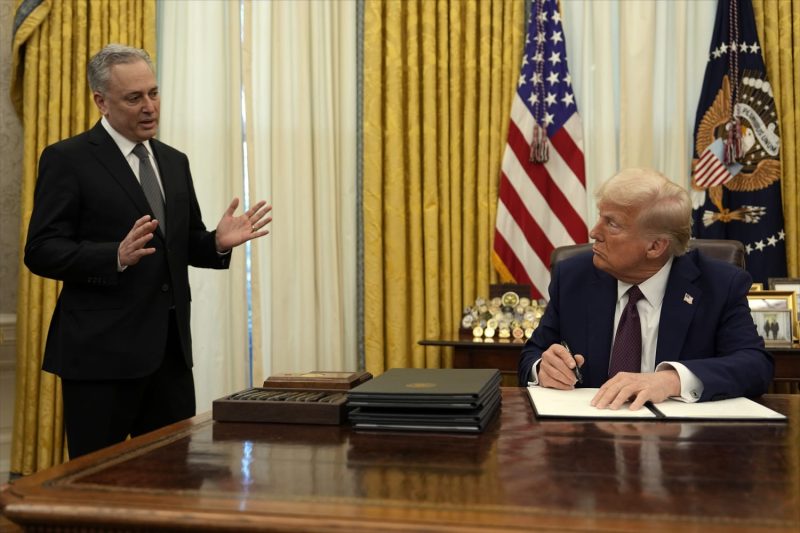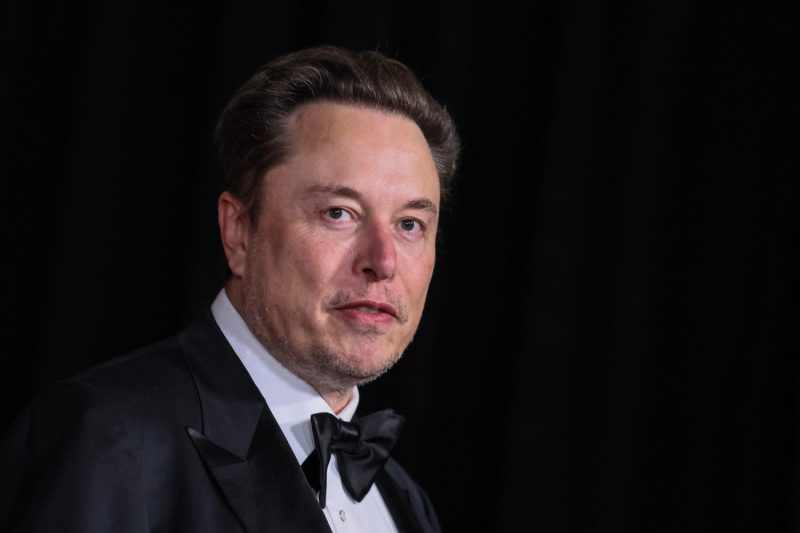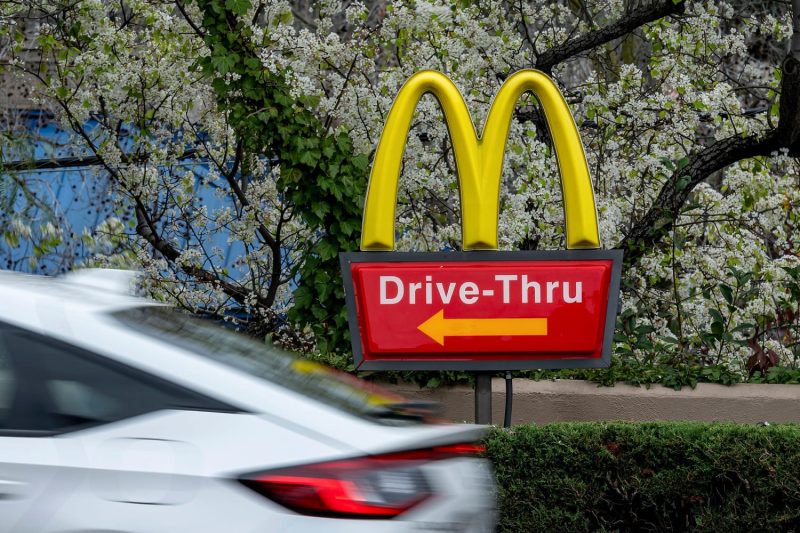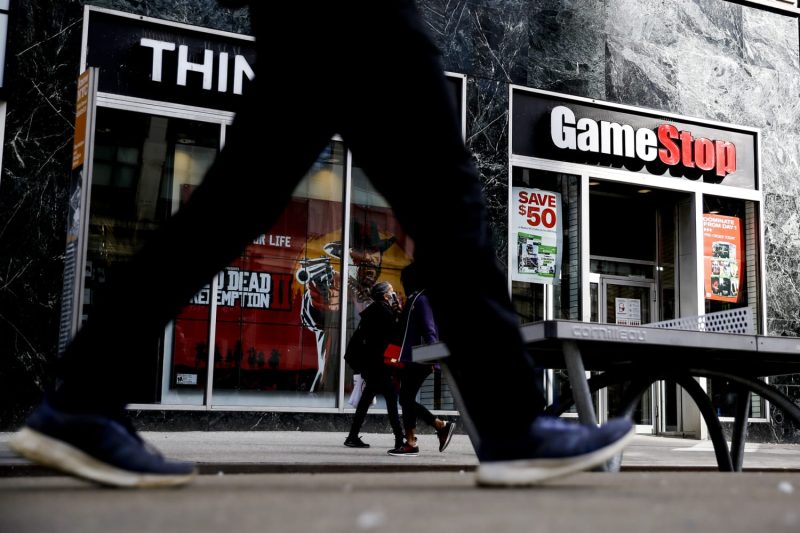
Last week, White House crypto czar David Sacks held his first press conference to discuss the future of crypto policy coming out of the Trump administration.
While that will include stablecoin legislation and digital asset regulation, Sacks told CNBC that a top agenda idea is also evaluating “whether it’s feasible to create either a bitcoin reserve or some sort of digital asset stockpile.”
But will the momentum around bitcoin and other cryptocurrencies carry over to corporate America more broadly, appearing on balance sheets?
To date, companies with exposure to bitcoin in their business operations have been the first movers in this space, in many cases, to show their support and buy-in to the industry. According to the bitcoin tracking website Bitcointreasuries, 79 public companies currently hold bitcoin, with some of the largest holders being companies like Riot Platforms, Coinbase and Block.
Strategy, the company formerly known as MicroStrategy, and its co-founder, Michael Saylor, have been the champion of this approach as the largest corporate holder of bitcoin. On its third-quarter earnings call earlier this month, the company said it holds 471,107 bitcoins on its balance sheet, about 2% of the total supply and worth roughly $45.2 billion.
Also on the list of crypto industry companies holding bitcoin on the balance sheet is Moonpay, a venture-backed financial technology company that builds payments infrastructure for crypto. The company has added bitcoin to its balance sheet equal to 5% of its operational cash, according to CEO Ivan Soto-Wright.
While Soto-Wright said some of the thought process is that “we’re only going to succeed if bitcoin succeeds,” he believes there is a growing argument to include bitcoin in any company’s treasury strategy.
“It’s really detached both from interest rates and equity market movements, so you could see it from that perspective,” he said. “You could also see it from the perspective of an inflation hedge .. in terms of large money movement, it’s incredibly efficient so you could argue it’s a better version of gold.”
That is one of the arguments that Saylor has made, and one he repeated while making one of the most high-profile pushes to spur a major U.S. company to add bitcoin to its balance sheet, appearing at Microsoft’s annual meeting to speak on behalf of a shareholder proposal that called on the company’s board to evaluate holding bitcoin or other cryptocurrencies.
Saylor doubled down on that message at the ICR conference earlier this year, where in a presentation he said that companies can either “cling to the past” and continue to buy Treasury bonds, execute buybacks and dividends, or “embrace the future” by using bitcoin as digital capital.
“It works for any company,” Saylor said in the retail conference’s keynote speech. “We’re the people building with steel and they’re building with wood.”
At least in the short-term, it can look good, too. Tesla, one of the few non-crypto-focused companies to hold bitcoin on its balance sheet, showed the positive side of this in its most recent quarter when it marked a $600 million profit due to the appreciation of bitcoin. The Financial Accounting Standards Board adopted a new rule for 2025 that mandates that corporate digital asset holdings be marked to market each quarter.
But so far, the message and broader movement has not spread much wider than the crypto industry. Just 0.55% of votes at Microsoft’s annual meeting supported the plan. Microsoft, as well as proxy advisors Glass Lewis and Institutional Shareholder Services, had all suggested shareholders reject the proposal ahead of the vote.
Microsoft said in an October proxy filing that its treasury and investment services team previously evaluated bitcoin and other cryptocurrencies to fund the company’s operations and reduce economic risk, adding that it “continues to monitor trends and developments related to cryptocurrencies to inform future decision making.”
At Microsoft’s annual meeting, CFO Amy Hood said: “it’s important to remember our criteria and our goals of our balance sheet and for the cash balances, importantly, is to preserve capital, to allow a lot of liquidity to be able to fund our operations and partnerships and investments .. liquidity is also a really important criteria for us, as well as generating income.”
The lack of adoption so far isn’t discouraging proponents of companies holding bitcoin on the balance sheet. Ethan Peck, the deputy director of the Free Enterprise Project, which is part of conservative think tank National Center for Public Policy Research, filed the shareholder proposal at Microsoft and said he plans to file similar proposals during the upcoming proxy season at other large companies. In all, it has been recently estimated that the S&P 500 universe of companies collectively holds over $3.5 trillion on balance sheets, though the figure changes quarter-to-quarter.
While Peck said he is not advocating for companies to take as aggressive of a stance as Strategy has, “Companies should consider holding a couple percent of bitcoin in order to negate or offset the base of your cash holdings because you’re losing your shareholders’ money.”
“The bond yields are not outpacing real inflation, so you’re losing money,” Peck said.
The performance of bitcoin over the past five years. Bitcoin has vastly outperformed cash equivalents, though with much greater volatility.
However, that debate is far from decided in corporate America, according to Markus Veith, who leads Grant Thornton’s digital asset practice, especially as bitcoin has reacted more in line with the broader stock market than inflation over the last year or so, and volatility is still high — something that Microsoft’s board also pointed out in its rejection of that shareholder proposal.
Veith said regulation might also be holding companies back. The SEC rescinded SAB 121 in January, a rule that required banks to classify cryptocurrencies as liabilities on their balance sheet, creating a capital requirement burden that kept many banks from providing custody for crypto assets.
That’s a change that could lead banks, including Goldman Sachs, to revisit the issue. CEO David Solomon told CNBC at Davos last month that “At the moment, from a regulatory perspective, we can’t own” bitcoin, but he added that the bank would revisit the issue if the rules changed. Much of Wall Street is also starting to at least cautiously sing a different tune, with Morgan Stanley CEO Ted Pick and Bank of America CEO Brian Moynihan both telling CNBC while at Davos last month that their institutions could allow broader adoption if the regulatory environment changes.
But regulation can’t solve the issue of crypto’s extreme volatility, and the concern that there may be another downturn at some point. “What do you do if there’s going to be another crypto winter, and the price goes down and you’re sitting for a prolonged basis on a big stash of bitcoin and the price keeps going down? How do you explain that to your stakeholders, shareholders, or board? That’s probably what is hindering more companies from going into this space,” Veith said.
The most recent CNBC CFO Council quarterly survey, taken in December, is a reflection of that risk assessment: 78% of the CFO respondents to the survey said bitcoin is a highly speculative asset class, while 7% said it is a credible store of value. Furthermore, 11% said it is a fraud, though that latter view has come down over time in the quarterly CFO survey.
As the Trump administration continues to embrace crypto, the crypto view from within corporate America could change more.
Asked if he thinks companies are reassessing the things they once assumed about crypto, Soto-Wright pointed to the overtures coming out of Washington, D.C., and the potential for a national reserve and additional regulation changes.
“If you look at the general trends, it’s becoming more adopted by institutions as there’s more circulation, as there are more products that come to market, and as it starts to develop its statute and stance as a truly diversified, uncorrelated financial instrument,” he said.
“I think you’ll start to see more and more companies recognize that in their treasury portfolio management strategy, this is another asset that is legitimized,” Soto-Wright said.



















